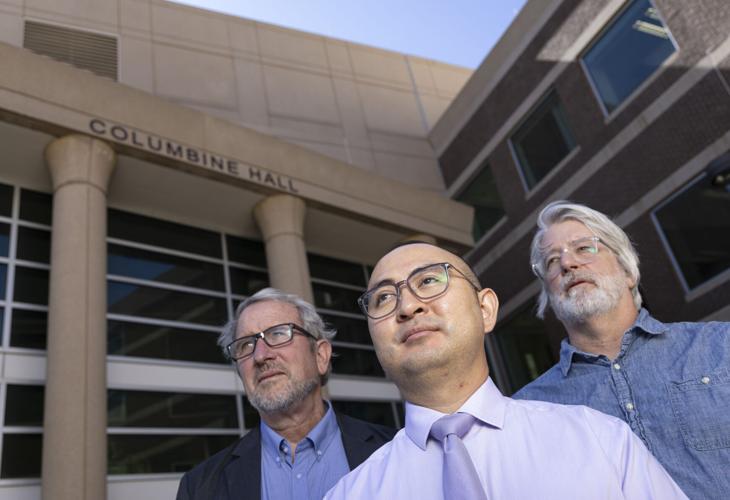
By any measure, Chicago Public Schools teachers are extraordinarily well paid given the norms of their profession. The median salary for a CPS teacher is nearly $95,000. That’s 21% more than teachers make in Cook County’s suburbs, where median pay is $78,000.
What’s more, CPS says it pays its teachers more than any other large school district in the nation, and that’s before whatever increases they get in union contract negotiations that are ongoing. The Chicago Teachers Union continues to demand 9% annual raises, an outlandish ask, and is growing ever more shrill as CPS CEO Pedro Martinez and his administration try to hold the line on behalf of Chicago’s beleaguered taxpayers and in the face of heavy pressure from Mayor Brandon Johnson to give CTU everything it wants. The impasse is headed next month for a neutral fact-finder, who will hear both sides out and produce a report in January.
These are the first steps toward a potential teachers strike, which could occur as soon as February. So, given the audacity of these CTU demands and salaries that already are among the highest in the nation, one might think that CPS teachers would be motivated to show up for work. School administrators tend to put great emphasis on student attendance, but precious little attention is paid to how frequently teachers miss work.
In the case of CPS, over 41% of teachers were absent from their classes more than 10 days during the 2023-24 school year, according to state records. Those 10 days represent a statistical benchmark the profession uses to monitor “chronic absenteeism” among teachers. Alarmingly, this poor record of CPS teachers showing up for work has been a new and recent phenomenon.
In the 2022-23 school year, for example, CPS teachers’ performance was even worse — 43% were absent more than 10 days. Before that year, though, the rate was considerably better: in the 2016-17 school year, chronic absenteeism among CPS teachers was 31%. The number worsened slightly from there leading into the pandemic but still was better than what we’re seeing now.
Not surprisingly, the rate of teacher attendance soared during the era of remote schooling, with just 12% chronically absent in 2020, for example. It’s a lot easier to show up for class when you don’t have to leave your home. So it’s fair to ask as CTU continues to make outrageous demands of city and state taxpayers, what exactly are Chicagoans getting for the $30,000-per-student they are currently paying, the highest per-student investment in Illinois? Why is it that all we hear from CTU is demands for more, but we never hear anything from the union about what its members owe the taxpayers (and parents) of this city? When CPS on Thursday released data on what CTU’s demands in the aggregate would cost the district (a cool $10 billion over four years), union President Stacy Davis Gates responded by accusing Martinez of wanting to “embarrass our union” with a “disingenuous number.
” There was nothing disingenuous about that figure; it’s accurate. But she was on the money in one respect: she and her union ought to be embarrassed. They ought to be embarrassed that they haven’t settled a contract at the reasonable 4%-5% annual salary increases that CPS has offered.
They ought to be embarrassed that they’re continuing to insist CPS hire thousands more CTU members when the district is facing deficits in the hundreds of millions as far as the eye can see. Before we go further, we should better define what chronic absenteeism means in the teaching profession. Teacher absences include sick days (CPS teachers get 10 of those paid) and personal days (they get three paid).
They also can take additional time off for bereavement, parental leave and such. When all of those types of absences total more than 10, teachers are recorded as chronically absent. These absences, of course, don’t include the substantial built-in vacation time teachers get during the school year: 10 days for winter break, five for spring break and eight other scheduled holidays like, say, Presidents Day.
We also should stipulate that CPS is far from the only Chicago-area district where teacher absences are a problem. At Evanston-Skokie School District 65, for example, nearly 43% of teachers were absent more than 10 times last year. Oak Park-River Forest District 200 was only slightly better, at 38.
5%. Teachers working for Naperville Community Unit School District 203, on the other hand, were there for their students last year; less than 20% were absent more than 10 days. In Waukegan’s large Community Unit School District 60, 99.
9% of teachers had fewer than 10 absences, accordingly to the state’s data. To be clear, that’s 0.1% of teachers chronically absent in Waukegan, which like CPS is a large and complicated school district with many low-income students, as compared with 41% in Chicago.
If readers are curious how their local schools performed on this metric (and others), they can go to the state’s website — illinoisreportcard.com — and look their schools up and benchmark them against others. We guarantee there will be some surprises for those who spend a little time going down the school data rabbit hole.
Some schools with top-notch reputations will disappoint while some low-profile neighborhood schools will perform very well. In Chicago, any parent with a child in CPS has experienced firsthand the heavy emphasis school leaders — principals and other administrators — put on student attendance. There are emailed reminders and constant exhortations to make sure their kids are present and on time.
Rightfully so. Student attendance is critical to learning, which is crucial to preparing tomorrow’s adults for the challenges of the workforce and independent life. But that’s only one part of the school-success equation.
We need an equal focus on the attendance of teachers . CPS students on the whole face more challenges than many of their suburban counterparts. As most of us have experienced in our lives at some point, a great teacher can make a monumentally positive difference in a child’s future.
But to have that opportunity, teachers need to be present. And in Chicago showing up is the least we should expect from our very well-compensated public-school educators. Submit a letter, of no more than 400 words, to the editor here or email letters@chicagotribune.
com ..














